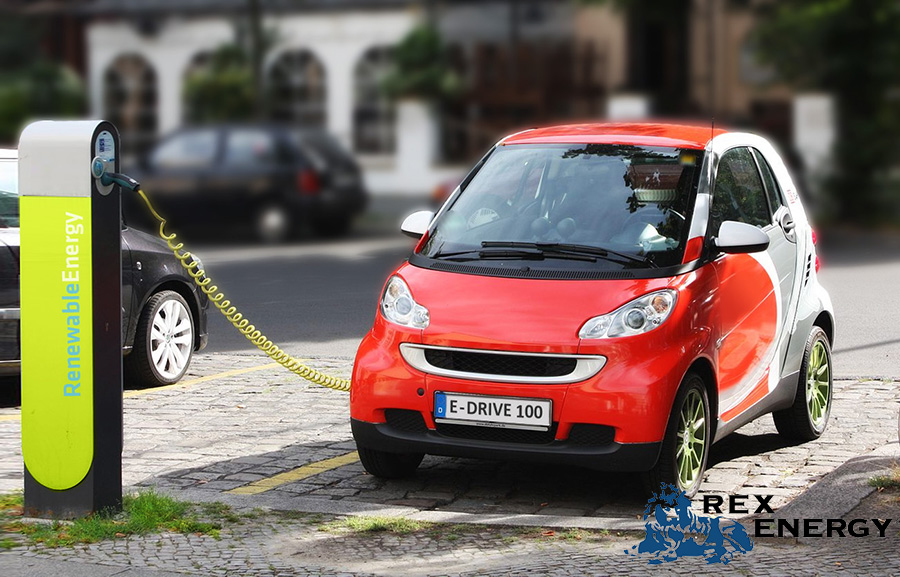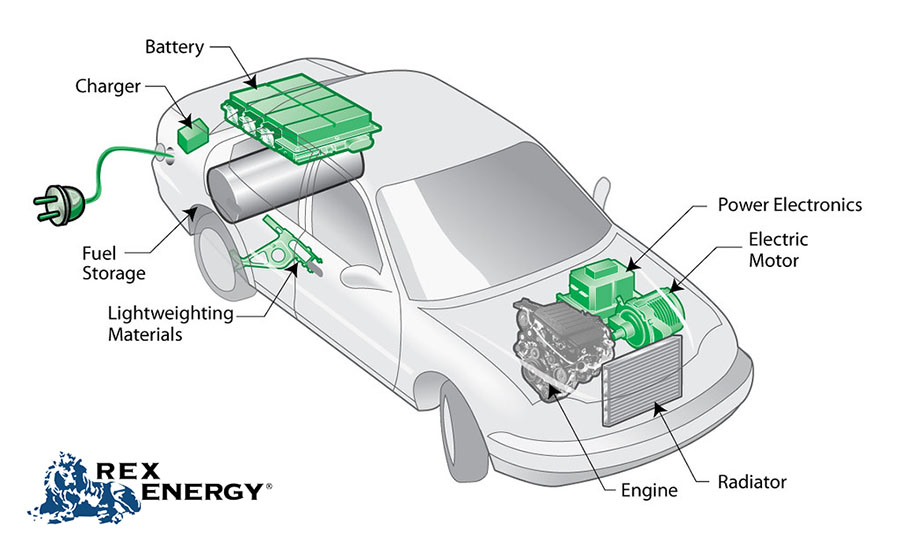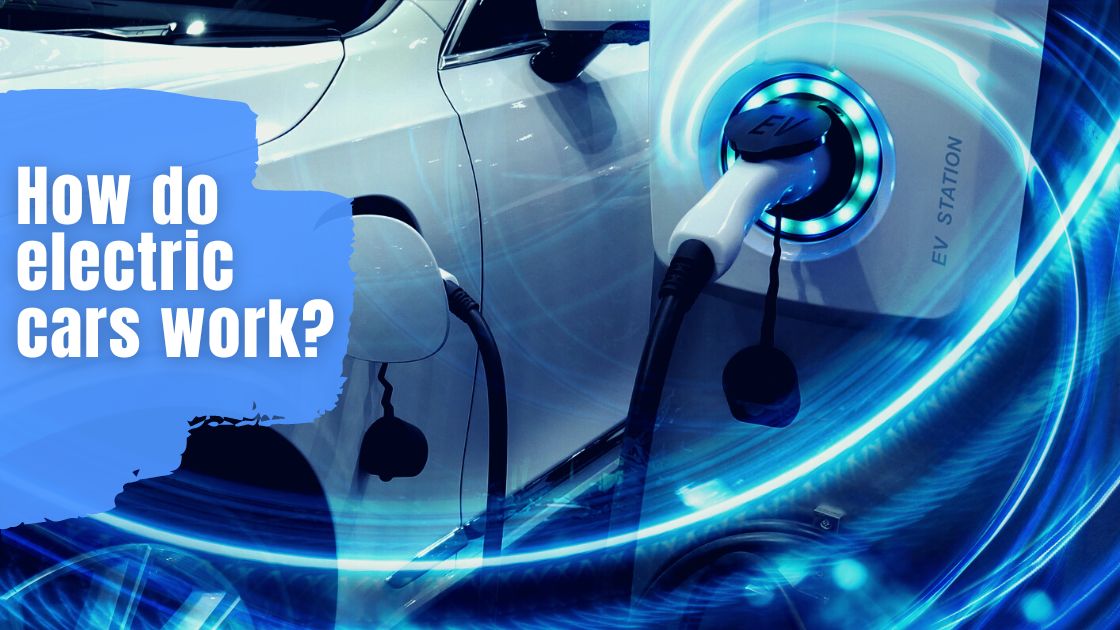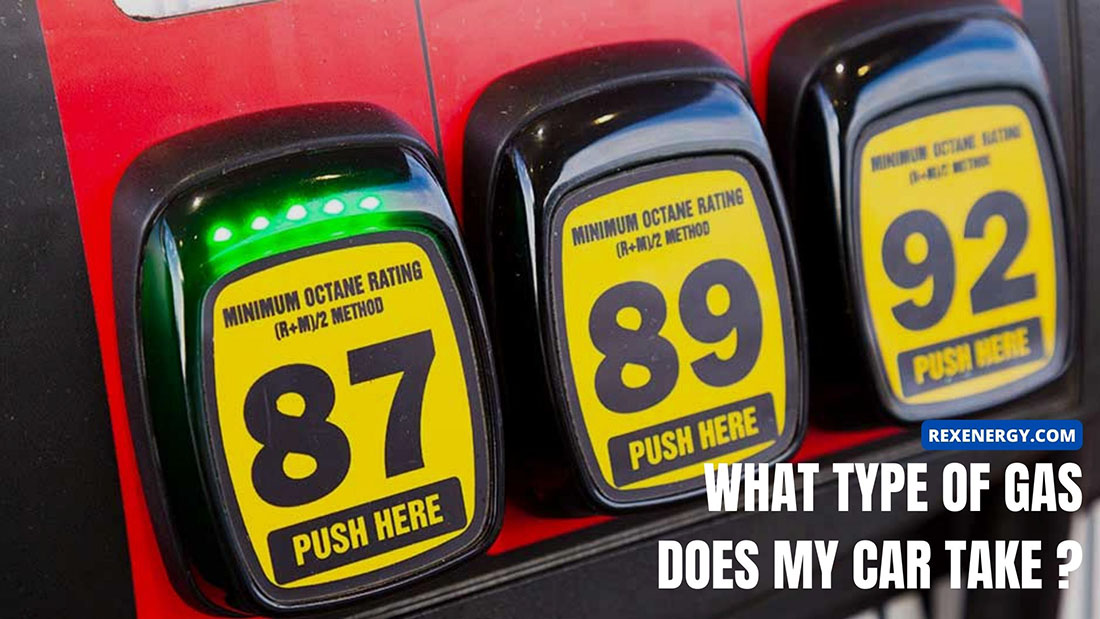Have you ever heard of Tesla? This brand is known for its eco-friendly electric vehicles (EVs). EVs use renewable resources and have no greenhouse effect. How do Tesla cars work to achieve this goal? Scroll down for details.
How Does An Electric Car Work?
Electric vehicles from Tesla or any major manufacturer run on energy from the charging point. The electricity in the grid is stored in a rechargeable battery. Once the driver steps on the accelerator, the power converts and moves to the engine.
The motor and the wheel are connected through gears. The frequency fluctuation of the current sends a signal to the speed regulator. This power rotates the wheels.
Some models may have a slightly different operation principle of electromagnetic energy transmission. However, they have the electric motor and battery system in common.
Key Components Of An Electric Car
Charging Port
This unit connects the battery pack and an external power supply. Power comes from home or commercial charging stations. Electricity is supplied to the vehicle when the driver installs the EVSE in the charge port.

Inverter
This part satisfies the two different power needs of the lithium-ion battery and the traction motor. It converts DC power to AC and delivers a suitable power supply to accessories.
The motor changes the rotational speed by adjusting the alternating current frequency. Another way is to interfere with the amplitude of the inverter signal. Hence, the inverter helps to customize the horsepower or torque. Simply put, it directly impacts the speed of the EVs.
Battery Pack
Batteries are an indispensable part of EVs. Its structure consists of many compartments containing battery cells installed in series. Specifically, a unit consists of a positive and negative electrode (cathode and anode) and an electrolyte solution.
There are two popular types of car batteries: Lithium-ion and Nickel-metal Hydride. In comparison, the first option stems its popularity from the superior utility.
It comes up with a high energy density which generates large currents. Besides, it suffers less damage, so the interval between two maintenance times is much longer than others.
The traction battery pack acts as energy storage. It draws electricity from the grid and supplies it to the motor during operation. Despite only one function, most buyers look closely at this part before making a purchase.
It determines two key factors of EVs: range and charging time – the larger the capacity, the better the performance over time and distance.
Some manufacturers may set up an extra battery for their proprietary models. This add-on relieves the overloaded burden of the traction pack. It stores and supplies power to some accessories by itself.
Electric Traction Motor
EVs roll on thanks to an electric motor that uses energy from a battery. The market now serves two types, DC or AC, but the latter is more common. Once the electromagnetics approaches the intended area, they create a magnetic field that rotates the motor.
Electric motors possess many advantages, such as smoothness, no noise, simple structure, etc. The best part is that it exhibits precise torque response. The speed increases 100 times that of an internal combustion motor.

Additionally, integrating the motor into the wheel allows for independent control over the reels. Drivers find the steering more flexible. It also supports the accurate calculation of electromagnetic torque through motor current and voltage parameters. As a result, the startup process takes less time than usual.
Power Control Unit
EPCU acts as the “brain” of EVs. This department is responsible for parameter management and control to ensure efficient operation.
Besides the inverter and converter, the Vehicle Control Unit (VCU) plays the main role in the whole system. Accordingly, it monitors most power parameters, including engine control, regenerative brake control, load management of direct current, etc.
Common Types Of Electric Cars
Battery Electric Vehicles (BEV)
These cars get all their energy from the grid. Instead of diesel or gasoline used for internal combustion engines, the electricity in the battery pack fuels the motor and other vehicle accessories. Therefore, the vehicle does not emit exhaust gasses into the environment.
Hybrid Electric Vehicles (HEV)
HEVs are a cross of internal combustion and electric engines. These models do not use electricity but gas. On the bright side, the regenerative braking unit recharges the battery pack and connects to the gasoline engine.
The motor operates when the vehicle slows down (an average of less than 30 km/h). Once you accelerate, the traditional one takes the lead. However, it runs at high efficiency to maximize fuel economy.
Plug-In Hybrid Electric Vehicles (PHEV)
Here is another hybrid between electric and conventional models like HEVs. However, the PHEVs provide an external charger for the battery. As a result, the power supply is large and flexible. The eletric motor remains a dominant role until it runs out of electrical energy. Only then will the internal combustion engine be turned on.
FAQs
What Are The Pros And Cons Of EVs?
Is an electric car worth your investment? It would be best if you took the time to consider both sides of your subject and its suitability to your consumer needs.
| Pros | Cons |
| – Going electric saves you more money than fossil fuel (petrol prices have increased significantly these days) – Electricity is renewable energy, while gas is not Contribute to the reduction of greenhouse gas emissions – Ideal for the tax credit Smooth operation – Less maintenance | – Require a large budget Take a long time to power up – Not suitable for long trips Charging stations are not common in some regions |
How Long Does It Take To Charge EVs?
Many factors determine the charging speed of EVs. However, the level of the charger plays the most important role. At the lowest level (120 volts), a full charge takes up to 20 hours.
When the capacity increases to 240 volts – a common option in commercial stations, you only wait 8 hours to kick start the car. Notably, fast charging technology fills 80% of demand in 30 minutes.
How Far Can EVs Go On A Single Charge?
The average driving range of these current EVs is 200-250 miles on a single fill-up. However, there is a significant difference between the shortest and the longest. Modern models now drive for 300 miles per charge, while obsolete ones stop working after 50 miles.
Conclusion
How do electric vehicles work? As mentioned above, they are equipped with an electric motor that receives power from the battery pack. However, this feature varies slightly for hybrid models. If you consider an eco-friendly vehicle, EVs should come out on top.








